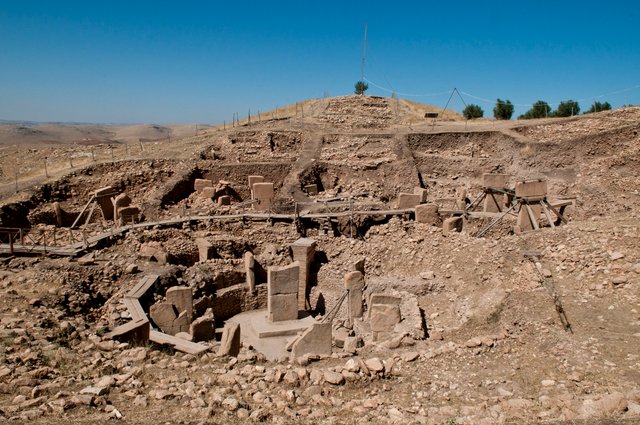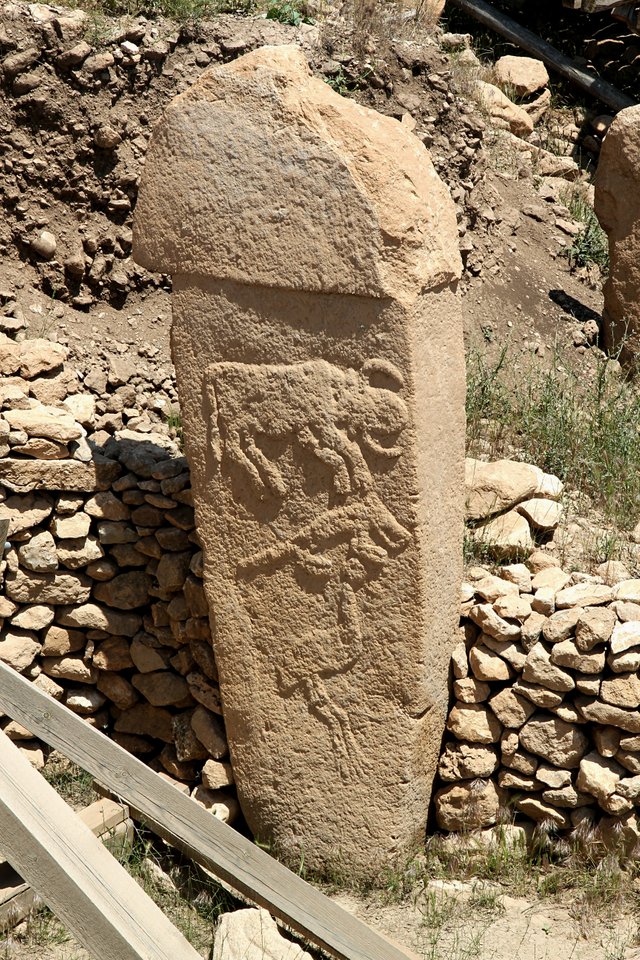5 Questions About Gobekli Tepe Answered by Graham Hancock and Randall Carlson
The debate between Michael Shermer, Graham Hancock and Randall Carlson on the Joe Rogan Experience podcast provided a huge spotlight for some burning questions regarding the “Lost Civilization Theory”. For the person in over their heads with the complex material during the debate, I’ve broken down and paraphrased some significant questions and answers that were addressed during the discussion regarding Gobekli Tepe and lost civilizations.
Hancock/Carlson’s Initial Position in Brief:
• Comet Impact hypothesis fills gaps that at this point are unexplained.
• There were extreme climate shifts at the end of the last ice age, and there must have been a “trigger” event that kick-started it. Other catastrophic events, such as sudden melting of giant ice sheets and mass extinctions of megafauna, coincide with the dates of this proposed trigger event – which should have occurred somewhere between 14,000 and 11,000 years ago. Investigations into impact proxies have yielded more evidence of cosmic activity during this window of time.
• The comet impact theory, although very controversial, is becoming widely accepted because of the mounting evidence. The full assemblage of events is difficult to explain by scientific processes without invoking a cosmic impact.
• Gobekli Tepe, a megalithic site unearthed in modern-day Turkey, is the earliest clue of organized human activity at the time of this hypothesized catastrophic event. It is posited that Gobekli Tepe was constructed by survivors of a civilization that was lost to a cosmic impact event. Hancock suspects that a transfer of technology and/or knowledge occurred at this site between hunter-gatherers and survivors of a lost, mainly because agriculture sprang up in the same time period and area of the world. This is the central premise of the Lost Civilization Theory that Michael Shermer criticizes.
Before laying out his points against the Lost Civilization Theory, Shermer provides some background into the lens of criticism through which he views the theory:
- Skeptical of “Alternative Archaeology” because it does not go through the proper peer review process like mainstream academia does – there is no consensus, therefore there is no validity to the claims.
- Problem of “patternicity”; the tendency to find meaningful patterns in random and/or irrelevant data. All scientists look for patterns in data, but the pattern and its correlation with the data must be sound.
- God of the gaps fallacy – A “gap of understanding” of some aspect of the world exists, therefore the cause must be supernatural. Shermer says Hancock’s argument uses data from anomalies which is then used in a compilation of similar data to support the hypothesis of a lost civilization.

Question #1: There is no evidence of metal tools or writing at Gobekli Tepe. How could they be considered advanced, or in possession of advanced knowledge and technology, if they didn’t have these things?
Within the context of their time, it may have been prudent not to use metal tools or a written language because they may not have deemed it necessary to do so. The idea of the dangers of writing is not a new one; There exists Egyptian traditions that tell of the pharaoh questioning the god Thoth about whether it was a good idea to give humans the gift of written language because of its susceptibility to being misinterpreted.
It should be noted that Gobekli Tepe was more of an institution of learning, such as a temple, than it was a residential site where people lived. It may have been a venue where people came to gather for reasons still unknown. If this is the case, then it makes sense that there is no surviving evidence of a human settlement so far. Furthermore, the site of Gobekli Tepe itself is not completely excavated – there is about 90% of the site still underground.
Question #2: If an ancient civilization was responsible for the construction of Gobekli Tepe, why haven’t their pottery, homes and villages been unearthed?
One unique feature of Gobekli Tepe is that it was deliberately buried under dirt and rocks that are distinctly different from the earth the site sits on. If no one lived there, why should there be pottery lying around? Pottery would not have been around, let alone shattered and used to deliberately bury a site of this magnitude.
After 12,000 years there likely would not be any trace of homes left. More importantly than the survival of their homes, Gobekli Tepe itself exists and it challenges the mainstream model. It is then reasonable to consider the possibility that there was something more than simply hunter-gatherers involved in the creation of this site.
Question #3: Why is it unreasonable to hypothesize that the hunter-gatherers of that time were responsible for Gobekli Tepe’s construction? They had a lot of time on their hands, so perhaps the capabilities of hunter-gatherers have been underestimated. Did the creators necessarily have to be an advanced civilization, or receivers of advanced technology?
The extent of the skills and limitations of hunter-gatherers were established long before Gobekli Tepe was discovered, and no one ever postulated that they could build megalithic sites. The notion of hunter-gatherers suddenly learning and implementing agrictulture is farfetched. In this case there must have been some kind of transfer of information – perhaps people came in and taught the hunter-gatherers how to use agriculture, and Gobekli Tepe is the earliest institute of learning.
Though hunter-gatherers had much more free time than modern people, the climate of the time must be accounted for. When placing these hunter-gatherers within the time frame of the climate zone (roughly 13,000 years ago), they must have dealt with an extremely challenging climate. Without the infrastructure of a large, organized workforce, it is an extremely difficult task to move a 20-ton block of stone in these weather conditions. They could not have time to hunt and gather while undertaking a project of this scale. It follows logically that whoever built Gobekli Tepe was clearly intelligent and understood how to manage a large-scale endeavor.
Lost civilizations are not an extraordinary idea. The Indus Valley civilization was not discovered until 1923; New information came about that caused reconsiderations of its past - There was simply too much evidence to suggest otherwise. The ability to amend opinions in the face of evidence is critical to coming closer to unlocking mysteries, and in the case of Gobekli Tepe the evidence is more nuanced. The 3-dimensional stone carvings of extinct animals and the astronomical alignments of true north embedded within the site itself are specific examples.
Question #4: The astronomical alignments found at Gobekli Tepe fall under the “patternicity” fallacy. Aren’t those alignments just a coincidence that ultimately cannot prove whether an advanced civilization exists?
The alignment of true north, not magnetic north, is a significant detail of Gobekli Tepe that is agreed upon by even the mainstream scientists and is not in dispute. For the ancients to know about the spinning axis of the earth and construct a site in sync with the stars classifies it as legitimate knowledge of astronomy and should be considered more than just mere coincidence.
Question 5: There are no explanations thus far to support any theory regarding a mysterious civilization, so why write a book that attempts to fill in all the gaps in knowledge rather than just admit that it is a huge mystery and leave it at that?
The mainstream will not speculate on anything and are not willing to explore other possibilities, which makes it very difficult for new ideas to gain exposure. It is the job of the journalist and author to study the data and offer an alternative and coherently argued point of view. Gobekli Tepe is a gigantic mystery worthy of exploration from a perspective that may not satisfy mainstream academia.
Follow me on Twitter: @thejindo

Grey grey is a gentleman :)